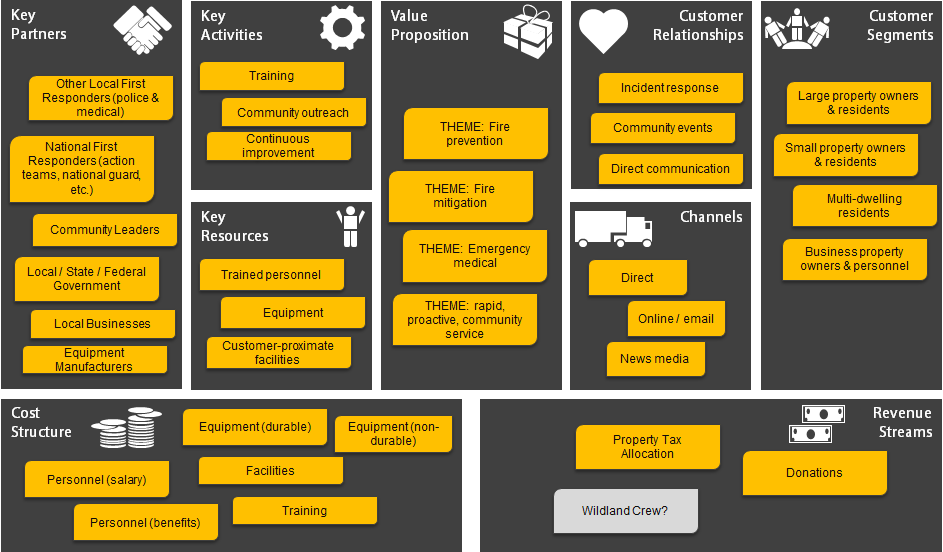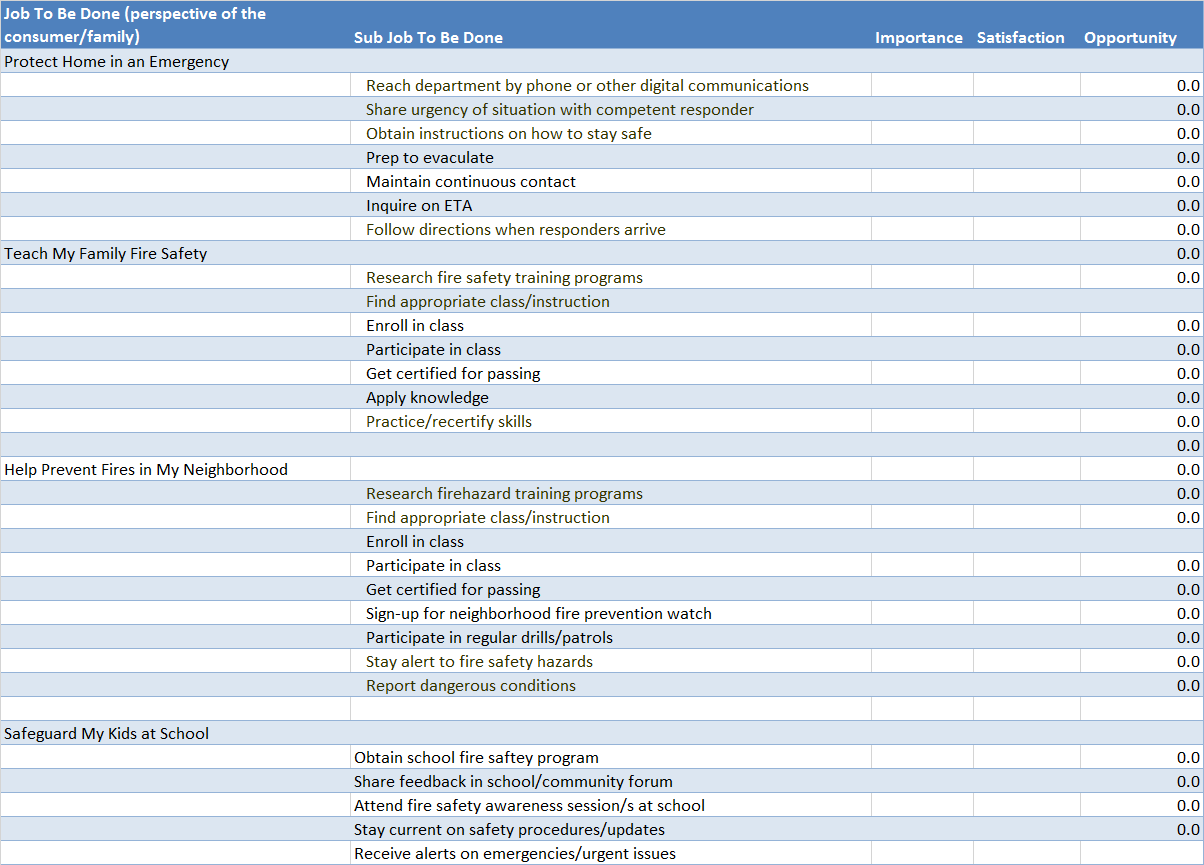Please see the attached point of view related to a very hot topic / challenge for most carriers today: how to generate sustainable revenue growth through new products. By tackling this problem holistically (new product ideas -> product configuration & sales launch -> product tracking & customer engagement) AND using the BMI toolkit for truly powerful implication analysis, any carrier will likely see tangible results.
Category Archives: Business Model Patterns
BMI Applied to First Responders (start)
Working with the local fire chief in the Falcon district (in Colorado Springs area, and one of several local fire departments very much involved battling this year’s massive Black Forest fire), we have shared the following two BMI components to facilitate the discussion focused on how BMI might actually help – see how using a business model mindset coupled with a “jobs” focus could potentially identify new ways for the fire department to be more successful, grow, and achieve its longer term goals.
Business Model Canvas (current state)
Jobs To Be Done (from a district resident perspective related to first responders)
Although we wont be setting any speed records for delivery here (this is being done in our spare time), we feel pretty confident we can identify several new areas for the local fire department to make meaningful improvements in the business of running their department. A couple of key objectives that are front & center for this effort:
- New funding sources (predictable being key)
- New ways of working with local community (e.g. tapping into HOAs more)
- Ballot planning (multi-year)
We will also we reaching out to other local fire departments around the country, and welcome your feedback/suggestions!
A New Business Model for First Responder Firefighters?
Having just gone through the ordeal of the Black Forest Fire, including being evacuated for 8 days without being allowed back to check on house or property, it made me wonder if even something as stalwart as our first responder firefighter business model could benefit from some BMI thinking.
To set the stage, let me first say how AMAZING these heroes are in what they do. They managed to save all the homes in our development, despite the 150 ft firestorm that came barreling towards / into our little bit of paradise. Take a look at what the crew faced below:
And here is a sampling of the aftermath:
So, clearly these guys faced the dragon and eventually beat it down. However, that does not mean there isn’t room for improvement. Furthermore, I wonder if these heroes ever get the chance to engage management consultants to take a fresh look at what they do, or more specifically, HOW they run their business / underlying business model. DISCLAIMER: we are not going anywhere near the actual fire fighting – these guys have that stuff nailed – but we want to take a look at the some of the stuff surrounding their heroic core.
In the coming weeks, we hope to debate this topic, put pen to paper, and hopefully even come up with something that could be considered useful. We will also pay very close attention to this business model problem from a not-for-profit perspective and how that manifests itself into business model design.
Patterns’ Power to Inspire
There is a broad spectrum of solutions helping companies identify new innovation ideas, from a departmental suggestion box, to studying the best practices of others, even to the vaunted halls of big data analytics. However, I wanted to throw an often underutilized source into the mix – business model patterns. What is a business model pattern? As Osterwalder & Pigneur define in their Business Model Generation book, business model patterns are similarities in how the individual business model building blocks behave (with similar characteristics and/or arrangements).
There are plenty of patterns to choose from – OPEN, Long Tail, FREEMIUM, SaaS, etc. – and each has its own characteristics. For example, the FREEMIUM pattern has unique Revenue Streams and Customer Relationships behavior. Could these be leveraged by a shared service function trying to redesign its future operating model? Maybe. Can the pattern inspire one of the function executives to put her own unique twist on the way they manage relationships, or secure their funding? You bet!
The power of patterns’ ability to inspire innovation was illustrated in a recent client engagement. We used a business model pattern presentation as a lead-in to a focused business model design session. The executives in attendance were asked to make notes of key building block features that they found interesting for each pattern discussed, and which might have relevance for their area. As we then moved into the actual business model design activity, it became clear that the participants had not only identified new possible variations on their offerings (the WHAT), but also specific business model changes they wanted to make to deliver that value (the HOW). Furthermore, they had already started to make the connection between the new ideas and their specific areas (i.e. made a preliminary implication analysis).
So, although ANY solution that leads to innovation is a step in the right direction, executives who don’t add business model patterns to their idea generation arsenal may be missing a relatively simple, golden nugget.









